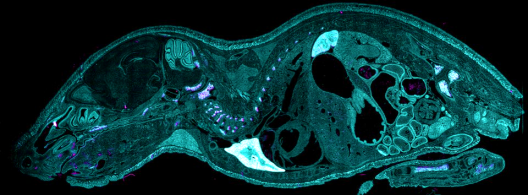Prof. Dr. Oliver Söhnlein
Neutrophils in steady state and disease

Inflammation
Vascular Biology
Physiology
Neutrophil
Atherosclerosis
Neutrophils, the most abundant circulating white blood cells in humans, have classically been considered a homogenous population of terminally differentiated cells with a well-defined and highly conserved function. Indeed, their short lifespan, their absent proliferative capacity, their limited ability to produce large amounts of cytokines, and their failure to recirculate from the tissue to the bloodstream have sustained this idea. However, increasing evidence over the last decade has demonstrated an unexpected phenotypic heterogeneity and functional versatility of the neutrophil population. Far beyond their antimicrobial functions, neutrophils are emerging as decision-shapers during chronic inflammation and tumour development. We are marking use of state-of-the-art immunohistochemistry, confocal microscopy, cell/organoid culture, single-cell RNA sequencing, bioinformatics, and molecular biology methods to study communication networks of neutrophils with neighbouring cells.

Vita
- 1997 - 2004 Medical School, Erlangen, Germany
- 2004 - 2008 PhD studies, Karolinska Institute, Stockholm, Sweden
- 2008 - 2010 Group leader, RWTH Aachen, Germany
- 2011 - 2012 Group leader, LMU Munich, Germany
- 2012 - 2016 Group leader, AMC Amsterdam, the Netherlands
- 2013 – 2021 Professor for Vascular Immunotherapy, LMU Munich, Germany
- Since 2017 Guest Professor for Inflammation Physiology, Karolinska Institute, Stockholm, Sweden
- Since 2021 Professor for Regulatory Mechanisms of Inflammation and Director of the Institute of Experiment Pathology, University of Münster, Germany
Selected references
Soehnlein O, Libby P. (2021). Targeting inflammation in atherosclerosis - from experimental insights to the clinic. Nat Rev Drug Discov. 20:589-610. Review
Schumski A, Ortega-Gómez A, Wichapong K, Winter C, Lemnitzer P, Viola JR, Pinilla-Vera M, Folco E, Solis-Mezarino V, Völker-Albert M, Maas SL, Pan C, Perez Olivares L, Winter J, Hackeng T, Karlsson MCI, Zeller T, Imhof A, Baron RM, Nicolaes GAF, Libby P, Maegdefessel L, Kamp F, Benoit M, Döring Y, Soehnlein O. (2021). Endotoxinemia Accelerates Atherosclerosis Through Electrostatic Charge-Mediated Monocyte Adhesion. Circulation. 143:254-266.
Silvestre-Roig C, Braster Q, Wichapong K, Lee EY, Teulon JM, Berrebeh N, Winter J, Adrover JM, Santos GS, Froese A, Lemnitzer P, Ortega-Gómez A, Chevre R, Marschner J, Schumski A, Winter C, Perez-Olivares L, Chang P, Paulin N, Schoufour T, Hartwig H, González-Ramos S, Kamp F, Megens RTA, Mowen KA, Gunzer M, Maegdefessel L, Hackeng T, Lutgens E, Daemen M, von Blume J, Anders HJ, Nikolaev VO, Pellequer JL, Weber C, Hidalgo A, Nicolaes GAF, Wong GCL, Soehnlein O. (2019). Externalized histone H4 orchestrates chronic inflammation by inducing lytic cell death. Nature. 569:236-240.
Winter C, Silvestre-Roig C, Ortega-Gomez A, Lemnitzer P, Poelman H, Schumski A, Winter J, Drechsler M, de Jong R, Immler R, Sperandio M, Hristov M, Zeller T, Nicolaes GAF, Weber C, Viola JR, Hidalgo A, Scheiermann C, Soehnlein O. (2018). Chrono-pharmacological Targeting of the CCL2-CCR2 Axis Ameliorates Atherosclerosis. Cell Metab. 28.175-182.
Alard JE, Ortega-Gomez A, Wichapong K, Bongiovanni D, Horckmans M, Megens RT, Leoni G, Ferraro B, Rossaint J, Paulin N, Ng J, Ippel H, Suylen D, Hinkel R, Blanchet X, Gaillard F, D'Amico M, von Hundelshausen P, Zarbock A, Scheiermann C, Hackeng TM, Steffens S, Kupatt C, Nicolaes GA, Weber C, Soehnlein O. (2015). Recruitment of classical monocytes can be inhibited by disturbing heteromers of neutrophil HNP1 and platelet CCL5. Sci Transl Med. 7:317ra196.
Links
